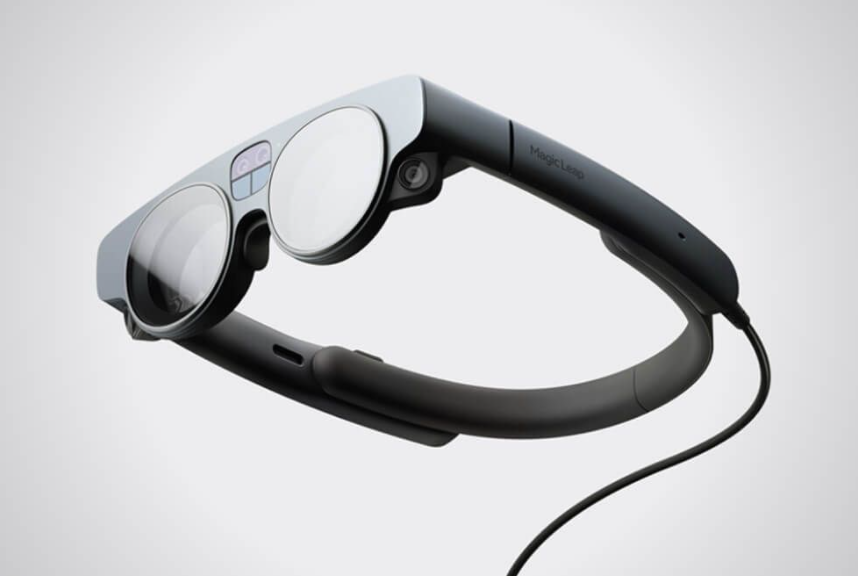Magic Leap 2 Will Cost More Than the Previous Model
Magic Leap One had a rough ride, a flop that almost sunk the company. Now the company faces a Herculean task as it seeks to regain the momentum it lost to competitors like Nreal and HoloLens.
Following the messy launch and the general flop of the first Magic Leap headset, Magic Leap’s new boss faces a tough task as she seeks to give her a company an image refresh and to regain lost trust. Could Magic Leap once again be a serious contender with its Magic Leap 2?

Magic Leap initially had the consumer market in mind with its mixed reality headset and only switched to enterprise applications when that market proved impossible to crack with its high-priced headsets. By the time it made that pivot, it was almost too late for the company.
In spite of the later enterprise focus of the Magic Leap One headset, neither its hardware nor software was suited for enterprise application scenarios and this limitation opened opportunities for the likes of HoloLens which has over the years become the enterprise AR headset of choice. Instead of its projected millions of units sold, Magic Leap only managed to sell a few thousand units of its first-generation mixed reality headset. Meanwhile, Microsoft HoloLens took advantage of Magic Leap’s fumbles to take over the enterprise market with its AR headset. In fact, over the past few years, HoloLens has dominated this market without serious competition.
A Medical and Defense Focus
Bloomberg reports that Magic Leap is now targeting surgeons and other medical customers with its upcoming augmented reality headset as the company pivots towards healthcare, defense, and manufacturing market segments.
Magic Leap’s next product is the Magic Leap 2 which is set to arrive in mid-2022. Bloomberg reports that the headset is already being used by health companies such as the heart-mapping startup SentiAR Inc. The Magic Leap 2 augmented reality headset is also being used by the neurotechnology company SyncThink Inc. A number of health companies have also gotten early access to the AR headset including Heru Inc. which is developing personalized vision-correction applications; and Brainland which is building a mixed reality program used to review surgical plans and for collaboration among colleagues.
The Magic Leap 2 AR headset features various improvements that easily lend themselves to healthcare applications. It has a wider field of view that can expand vertically thereby enabling a doctor or surgeon to look up at a virtual screen or look down at a holographic image overlayed on the patient.
The ML2 headset is also designed with a dimming feature that can fade out a bright background such as a well-lit operating room or for zooming into the part of the patient that a surgeon is operating on. The new Magic Leap AR device is also smaller and lighter and can be worn easily.
Former Microsoft executive Peggy Johnson took the helm at Magic Leap in 2020 and right from the outset, defined her focus as the development of a Magic Leap 2 Augmented Reality headset as opposed to the company’s vague ‘mixed reality’ focus in the years before. For years after its founding, Magic Leap had insisted that it was developing a mixed reality device and for many, it wasn’t clear whether the company was building a virtual reality or augmented reality device or an amalgamation of the two.
The Magic Leap 2 headset is set to appear in mid-2022 and Johnson has said the device will be a little more expensive than the first Magic Leap model.
Johnson sees the AR device’s target market as occupational groups who are already “used to wearing something on their eyes” such as surgeons or workers in the industry. Johnson is also not ruling out possible future collaboration with the US military, especially for training applications which Johnson regards as “appropriate”, a sensitive topic given that some Microsoft employees had registered protests over the HoloLens 2 partnership with the US military.
Magic Leap looked promising when it was launched in 2010. It was a pioneer with no serious competition and billions of dollars in investments. However, the company struggled with going mainstream and was soon upstaged by a more agile competitor in the HoloLens, which entered the fray 5 years after Magic Leap’s launch. 12 years later, as Magic Leap rebounds, it now has to contend with other serious competitors in the augmented reality space including Meta and Apple both of which are said to be developing Augmented Reality products.
At the moment, virtual reality is winning over augmented reality and commands a far bigger market. According to the data research firm IDC, close to 90% of the headset sales so far have been virtual reality rather than augmented reality.
Although Magic Leap still has an enterprise focus, the company isn’t giving up on the consumer market either. Johnson has indicated that she is “absolutely” interested in going after the VR market at some point in the future when compelling applications have come into existence. Johnson that VR technology will also need to get smaller or cheaper in order to fit ordinary sunglasses.
https://virtualrealitytimes.com/2022/01/14/magic-leap-2-will-cost-more-than-the-previous-model/https://virtualrealitytimes.com/wp-content/uploads/2021/10/Magic-Leap-2-AR-Headset-600x403.pnghttps://virtualrealitytimes.com/wp-content/uploads/2021/10/Magic-Leap-2-AR-Headset-150x90.pngAugmented RealityTechnologyMagic Leap One had a rough ride, a flop that almost sunk the company. Now the company faces a Herculean task as it seeks to regain the momentum it lost to competitors like Nreal and HoloLens. Following the messy launch and the general flop of the first Magic Leap headset,...Sam OchanjiSam Ochanji[email protected]EditorVirtual Reality Times - Metaverse & VR
